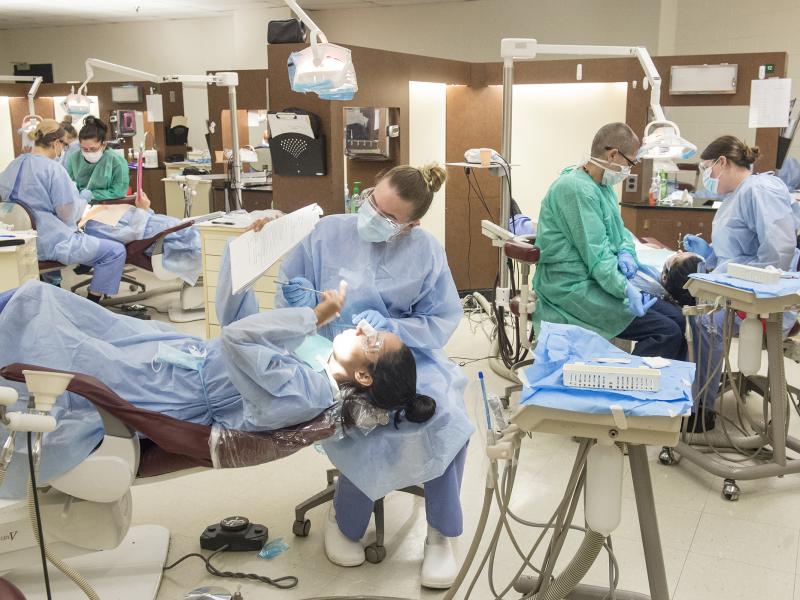-
Program Duration: 2 Year Program
-
Degree Type: Associate in Applied Science (A.A.S.)
-
Total Credit Hours: 83

About This Program
Our Dental Hygiene program will teach you how to play a critical role as part of a dental health care team that educates and treats patients. You will provide preventative care and treatment, which may include medical and dental history review, head and neck examination, exposure of dental radiographs (x- rays), dental prophylaxis (teeth cleaning), fluoride, sealants and polishing of restorations. This is the only accredited Dental Hygiene program in Philadelphia, through which you will use state-of-the-art equipment; have access to faculty who are experts in the dental hygiene profession; benefit from supervised, hands-on experience with patients; and receive excellent preparation for taking the required exams for licensing and certification.
This program is accredited by the Commission on Dental Accreditation of the American Dental Association.

Launch Your Career in Dental Hygiene
- Dental Hygienist – est. salary $99,883
Starting Pay for Dental Hygienists
Number of Jobs in the Region
10-year Job Outlook in the Region for Dental Hygienists
Dental Hygienists
Administer oral hygiene care to patients. Assess patient oral hygiene problems or needs and maintain health records. Use x-ray machines, and advise patients on how to maintain oral health.
Starting Salary: $77,058

Typical Tasks
- Record and review patient medical histories
- Clean calcareous deposits, accretions, and stains from teeth and beneath margins of gums, using dental instruments.
- Feel and visually examine gums for sores and signs of disease.
- Examine gums, using probes, to locate periodontal recessed gums and signs of gum disease.
-
Provide clinical services or health education to improve and maintain the oral health of patients or the general public.
- Chart conditions of decay and disease for diagnosis and treatment by dentist.
Related Programs
Let's Get Started
